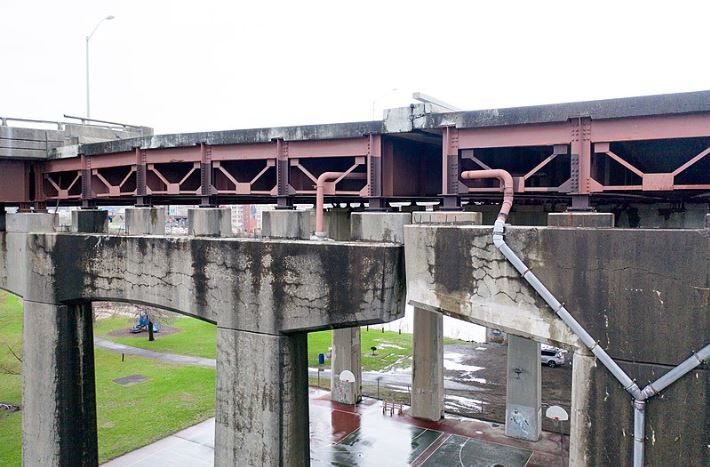
Mahmoud is the co-author of a new study linking the potential impacts of climate change with the structural integrity of thousands of steel girder bridges transecting America's highways and towns. The study, "Impact of climate change on the integrity of the superstructure of deteriorated U.S. bridges," was published in the peer-reviewed online journal, PLOS ONE on October 23, 3019.
These steel girder bridges frequently suffer from debris clogging their expansion joints. Expansion joints are what keeps the bridges steady as temperatures cause the steel to expand and contract as the air heats and cools. Because of this thermal expansion, debris removal from the expansion joints is an ongoing job.
Clogged joints, rising temperatures
The research team reasoned that with the climate crisis going on now, we can expect higher average temperatures in the future, meaning the thermal stress on these bridges built over 50 years ago would be unprecedented. Heat stress can cause buckling and cracking, which are exacerbated by bending from the weight of trucks and cars, and axial loading from the expansion restriction.
The two engineers argue that this is a recipe for disaster.
"We as engineers must start to look beyond what we have initially been taught on how to analyze systems and start to think about what climate change is going to do to our understanding of component-level behavior and system-level performance," Mahmoud says in a press statement.
Four different seasonal scenarios for temperature at the time of each bridge's construction were considered in the study, along with projected average temperatures for the years 2040, 2060, 2080 and 2100. The engineers' aim was to rank bridges in order of needed maintenance after accounting for the new normal brought on due to the climate crisis.
The results showed that bridges located in the northern portion of the United States, including the Northern Rockies and Plains, Northwest and Upper Midwest, are the most vulnerable to more pronounced increases in temperatures. Less susceptible regions were the Southeast and Northeast.
"We as engineers must start to look beyond what we have initially been taught on how to analyze systems and start to think about what climate change is going to do to our understanding of component-level behavior and system-level performance," Mahmoud said.



I bet you didn't know that Rust DID NOT EXIST BEFORE THE INDUSTRIAL REVOLUTION! (SARCASM.) Simply put, our Institutionalized absurdity continues to grow exponentially.
RC's Quick history - no research, by recall only* - of the 'Climate Change Pitch' - (FYI, by its definition 'climate' includes 'change')- FKA: What a f'g joke. If you don't keep up with 'entropy' on your property, (e.g., your house, boat, roof, car, et al.) they will fall apart and the costs to ultimately fix them up will be far greater than if you'd not ignored them on the way. And entropy has remained relatively constant.
THAT is the cause of our infrastructure problems! If we'd dedicated only 10% of our
Defense(sic) Offense Budget; we'd have these problems beat; 20% and we'd have most others beat. (And still would spend more than the rest of the world on it.)*R.C.
* I did no reseearch for this and forget the specifica stats; hence, I will happily defer to properly sourced recent info. (E.g., Tony Heller.)
RC